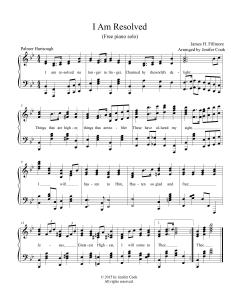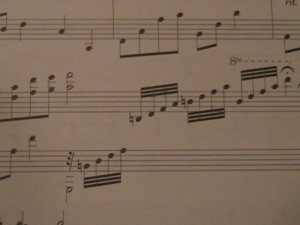Audio of lesson…What_a_Friend_We_Have_in_Jesus_Interpretation
The interpretation of a piano solo is of upmost importance.
In my younger years, my dad always reminded me to play as though I were speaking the song.
He told me to “feel the music” and learn to breathe just as a singer would breathe when singing the same song.
To this day, I always sing the words in my head while playing to focus on the message.
Some words may need to be slower for a special emphasis…while other words can be sped up
to portray a sense of urgency or importance.
To stress the importance of interpretation…I will play an excerpt of my arrangement
“What a FriendWe Have in Jesus”.
The first time through…I will play in strict time with no ebb and flow.
Hear the difference in the second time as I play in a more conversational style.
What_A_Friend_Audio_Samples_
Notice the treatment of the inner voice movement (notes under the melody) and fill-ins (notes between held words).
Fill-ins are played with a softer touch then the melody.
Fill-ins are always meant to be softer than the melody to avoid distraction of the message.
The next time you play or sing a solo….just remember to interpret the music just as though you were ‘speaking’ the words.
The message will be so much more affective!
Free Music: What_ a_ Friend_ We _Have_ in_ Jesus

